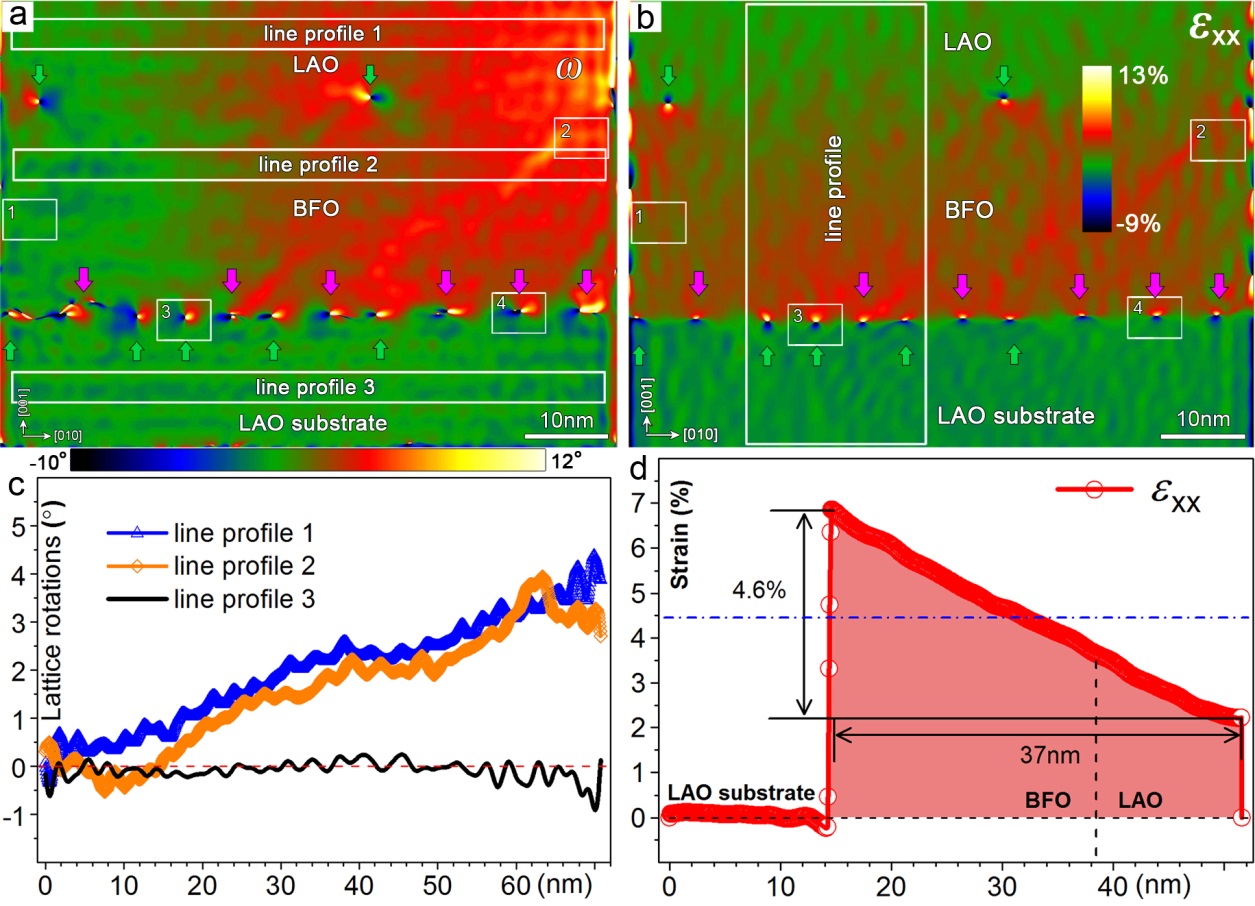Scientists from Institute of Metal Research, Chinese Academy of Sciences (IMR, CAS) recently fabricate a lead-free perovskite nanostructure array with giant linear strain gradient and extremely low elastic energy.
As is well known that elastic strains, particularly inhomogeneous strains can tune, enhance, or create novel properties of some nanoscale functional materials. It’s still infeasible to archive potential devices with exotic properties dominated by inhomogeneous strains. Such stagnations lie in the general predetermination that the elastic energy resultant from the disclination strains therein would be so pronounced that a large scale assembling of inhomogeneous strains could be rather difficult.
With a long-standing tradition with several decades of applying transmission electron microscopy to materials science, the research team with leading scientists of Prof. MA Xiuliang, Prof. ZHU Yinlian and Dr. TANG Yunlong, fabricate inhomogeneous strains with a linear gradient as giant as 106/m, featuring an extremely lower elastic energy cost compared with a uniformly strained state.
The strain gradient causes a polarization of several microcoulomb per square centimeter through flexoelectric coupling, which is derived from the strain mapping on the basis of aberration-corrected scanning transmission electron microscopy, resulting from the disclinations in the perovskite BiFeO3 nanostructures array grown on a LaAlO3 substrate via a high deposition flux.
This work makes it possible to greatly enhance the solar absorption as confirmed by the UV-visible absorption measurements.
This study provides an opportunity to quantitatively measure the contribution of inhomogeneous strains and assemble them in a nanostructure for the development of novel device concepts.
It also has a potential application in the field of electromechanics and photoelectricity.
Their work, entitled "Giant linear strain gradient with extremely low elastic energy in a perovskite nanostructure array", is detailed in Nature Communications.

Figure. Lattice rotation (ω) and in-plane strain (εxx) maps of the two-layer LaAlO3/BiFeO3/LaAlO3(001) nanostructures. (a) 2D lattice rotation (ω) and (b) in-plane strain (εxx) maps via GPA. Profiles corresponding to the three marked lines in (a) are visualized in (c). A white boxed area labeled as ‘line profile’ in (b) is chosen as a visualization line-profile shown in (d). A blue dotted line in (d) indicates the nominal mismatch magnitude (4.5%) for BiFeO3/LaAlO3(001). The strain gradient of εxx is estimated by the slopes of the curve in (d), which is well above 106/m order.(Image by IMR)
Contact:
Prof. MA Xiuliang
Institute of Metal Research, Chinese Academy of Sciences
72 Wenhua Road, Shenyang 110016, China
E-mail:xlma@imr.ac.cn